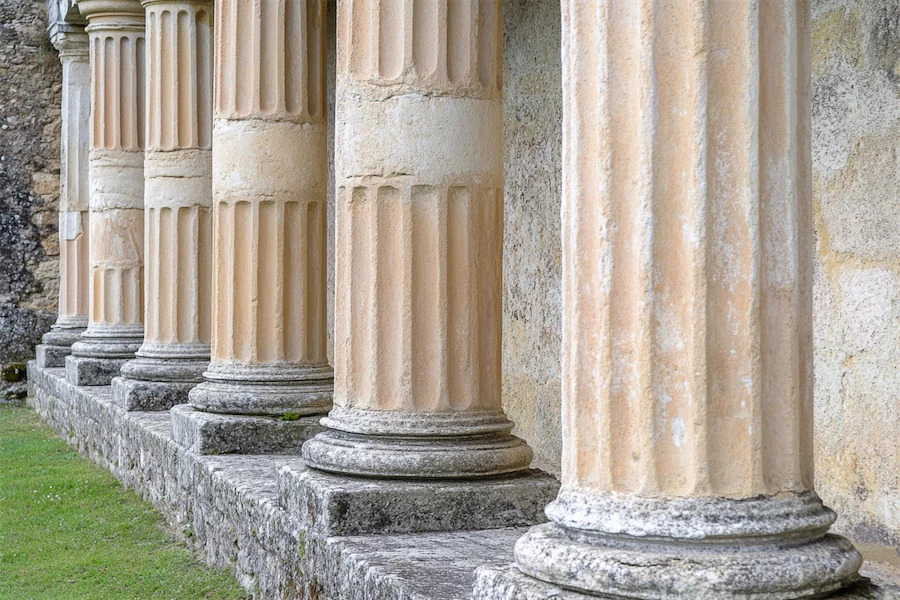Roman columns are a fundamental element of ancient Roman architecture, reflecting the empire’s engineering prowess and aesthetic sensibilities. Adapted from earlier Greek designs, Roman columns not only served structural purposes but also conveyed symbolic meanings, commemorating victories and deifying emperors.
History and Origins of Roman Columns
The Romans inherited the use of columns from the Greeks, integrating and modifying the three classical orders—Doric, Ionic, and Corinthian—into their architectural repertoire. They also developed two additional orders: the Tuscan and the Composite. Columns were employed in various structures, including temples, basilicas, and triumphal monuments, often symbolizing power and grandeur.
Key Features of Roman Columns
Roman columns are characterized by their adherence to the five classical orders, each with distinct features:
- Doric: The simplest and sturdiest, featuring plain capitals and fluted shafts. Roman Doric columns often included bases, unlike their Greek predecessors.
- Ionic: Recognized by the volutes (scroll-like ornaments) on their capitals and more slender, fluted shafts, conveying elegance.
- Corinthian: The most ornate, with capitals adorned with acanthus leaves and elaborate decorations, symbolizing luxury.
- Tuscan: A Roman innovation, similar to Doric but with unfluted shafts and a simpler design, reflecting strength and simplicity.
- Composite: Combining elements of Ionic and Corinthian, featuring volutes and acanthus leaves on the capitals, representing a synthesis of complexity and grace.
Applications of Roman Columns
Roman columns were integral to various architectural structures:
- Temples: Columns supported porticos and peristyles, as seen in the Pantheon, which features Corinthian columns.
- Basilicas: Public buildings like the Basilica Ulpia utilized columns to create vast interior spaces for civic activities.
- Triumphal Monuments: Columns commemorated military victories, such as Trajan’s Column, adorned with reliefs depicting his Dacian campaigns.
Considerations When Choosing Roman Columns
When incorporating Roman columns into architectural designs, consider the following:
- Aesthetic Intent: Select an order that aligns with the desired visual impact, from the simplicity of Tuscan to the opulence of Corinthian.
- Structural Requirements: Ensure the chosen column type meets the load-bearing needs of the structure, as different orders have varying proportions and strengths.
- Historical Context: Incorporating specific orders can evoke particular historical periods or cultural associations, enhancing the thematic coherence of the design.
Conclusion
Roman columns exemplify the architectural innovation and cultural expression of ancient Rome. Their diverse styles and applications continue to influence modern architecture, symbolizing strength, beauty, and historical continuity.
